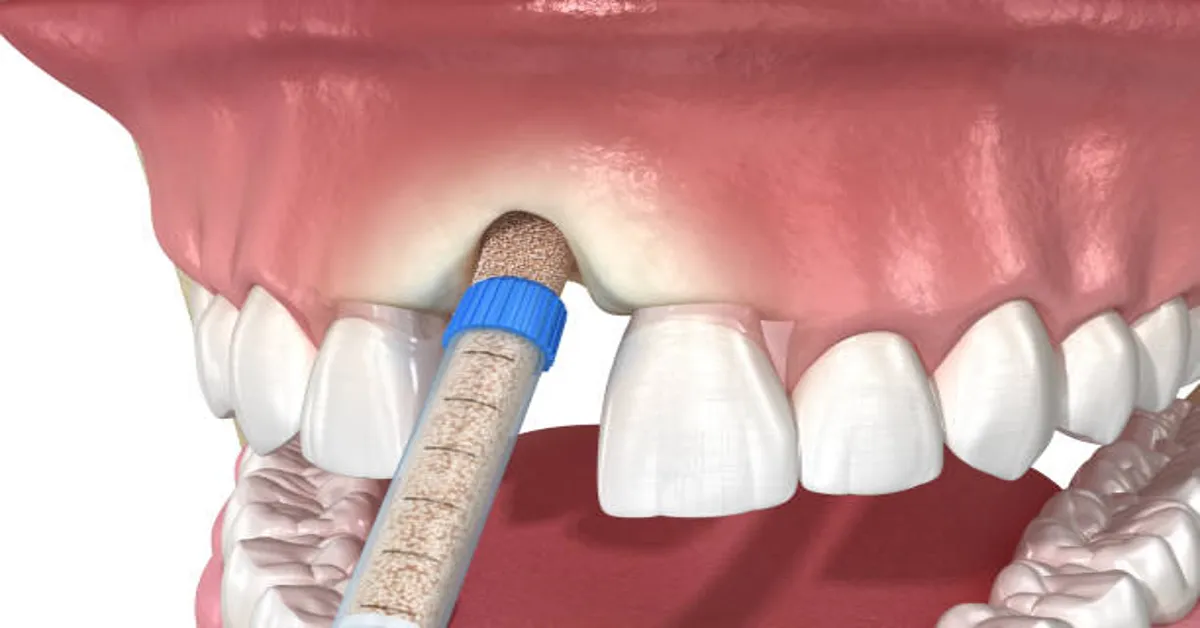Dental bone grafting is one of the most essential procedures in modern dentistry, particularly in restorative and implant treatments. It addresses bone loss in the jaw, which can occur due to tooth loss, periodontal disease, trauma, or congenital defects. Since dental implants require a stable and healthy bone foundation, bone grafting helps rebuild and strengthen the jaw to support long-term oral health and functionality. This article explains everything in detail — from the basics of what a dental bone graft is to the recovery process, benefits, risks, and frequently asked questions.
What is a Dental Bone Graft?
A dental bone graft is a surgical procedure that restores or replaces missing bone in the jaw. The grafted bone may come from the patient (autograft), a donor (allograft), an animal source (xenograft), or synthetic material (alloplast). Over time, the graft material integrates with the patient’s natural bone through a process called osseointegration, creating a strong and stable foundation.
Bone grafts are most commonly recommended when:
- There is insufficient jawbone to support dental implants.
- Gum disease has caused bone loss around teeth.
- Trauma, cysts, or tumors have damaged the bone.
- Long-term tooth loss has led to bone resorption.
Why Jawbone Loss Occurs
Jawbone loss is a natural response to missing teeth or chronic oral diseases. Without stimulation from chewing and biting forces, the jawbone begins to shrink. This process, called bone resorption, can lead to significant changes not only in oral health but also in facial aesthetics.
Causes of Bone Loss
| Cause | Explanation |
|---|---|
| Tooth Loss | Without roots, bone lacks stimulation and begins to resorb. |
| Periodontal Disease | Bacterial infection damages bone around teeth. |
| Trauma or Injury | Fractures or accidents may cause bone loss. |
| Cysts or Tumors | Removal of growths can leave bone defects. |
| Denture Wear | Long-term denture pressure may accelerate resorption. |
| Developmental Defects | Some individuals are born with jaw irregularities or insufficient bone. |
Types of Dental Bone Grafts
Different types of graft materials are available, each with advantages and considerations.
| Graft Type | Source of Bone | Pros | Cons |
|---|---|---|---|
| Autograft | Patient’s own body (often hip, chin, or jaw) | High success rate, natural integration | Requires second surgery site |
| Allograft | Donor (cadaver bone, processed and sterilized) | No second surgery, safe and effective | Slight risk of rejection |
| Xenograft | Animal source (commonly bovine) | Readily available, good structure | Slower integration |
| Alloplast | Synthetic materials (calcium phosphate, bioactive glass) | No disease risk, customizable | May lack natural properties |
Dentists select the type based on medical history, oral condition, and treatment goals.
The Dental Bone Grafting Procedure
1. Pre-Surgical Evaluation
Before the surgery, the dentist performs a thorough assessment:
- X-rays and 3D scans to measure bone density and volume.
- Medical history review to check for systemic conditions like diabetes or osteoporosis.
- Treatment planning to decide graft type and anesthesia.
2. The Surgical Process
- The area is numbed with local anesthesia; sedation may be used for anxious patients.
- An incision is made in the gum to expose the jawbone.
- The graft material is placed into the deficient area.
- In some cases, a membrane (guided tissue regeneration) is placed to protect the graft.
- The gum is sutured back, and healing begins.
3. Healing and Integration
The healing process can take 3 to 9 months depending on the extent of bone loss and the type of graft used. Over time, the graft fuses with the natural bone, providing a stable base for implants.
Recovery After Bone Grafting
The recovery phase is crucial. Most patients experience mild swelling, soreness, or minor bleeding for the first few days, which gradually subsides.
Recovery Timeline
| Time Frame | Healing Stage |
|---|---|
| First 24-48 hrs | Swelling, discomfort, minor bleeding. Cold packs and pain relievers advised. |
| Week 1 | Stitches begin healing, soft diet recommended. |
| Weeks 2-4 | Swelling decreases, normal activities resumed. |
| 3-6 Months | Bone integrates, new bone tissue forms. |
| 6-9 Months | Complete healing; ready for dental implants. |
Benefits of Dental Bone Grafting
- Supports Dental Implants: Provides the necessary bone foundation for long-lasting implant success.
- Prevents Facial Collapse: Maintains jaw structure, preventing sunken cheeks and premature aging.
- Restores Chewing Function: Improves ability to eat comfortably and digest food better.
- Enhances Aesthetic Appearance: Improves smile design and facial symmetry.
- Stops Progression of Bone Loss: Prevents further oral deterioration.
Risks and Complications
Although generally safe, bone grafting carries some risks:
- Infection at the surgical site.
- Swelling or pain beyond expected levels.
- Graft failure (rare but possible).
- Nerve injury causing temporary numbness.
- Rejection of graft material (especially with donor or synthetic grafts).
Following the dentist’s post-care instructions significantly reduces risks.
Success Rates of Bone Grafting
Dental bone grafts have a high success rate, often above 90–95% depending on patient health and graft type. Factors influencing success include:
- Patient’s overall health (smokers or diabetics may face challenges).
- Quality of oral hygiene after surgery.
- Skill of the surgeon and proper treatment planning.
Post-Surgery Care and Lifestyle Adjustments
- Oral Hygiene: Use antibacterial rinses, soft brushing, and avoid disturbing the surgical site.
- Dietary Adjustments: Eat soft foods like yogurt, smoothies, soups, and avoid hard or crunchy foods.
- Avoid Smoking and Alcohol: Both hinder healing and increase graft failure risk.
- Regular Dental Checkups: Ensure healing progress and early detection of issues.
Alternatives to Bone Grafting
While bone grafting is highly effective, alternatives exist:
- Short Implants: Used in cases of minimal bone height.
- Zygomatic Implants: Anchored into cheekbones for patients with severe bone loss.
- Distraction Osteogenesis: Gradual lengthening of bone through mechanical devices.
Cost of Dental Bone Grafting
The cost varies depending on the type of graft, location, and complexity.
| Graft Type | Approximate Cost Range (USD) |
|---|---|
| Autograft | $2,000 – $3,500 |
| Allograft | $1,000 – $2,500 |
| Xenograft | $1,200 – $2,800 |
| Alloplast | $800 – $2,000 |
Insurance may cover a portion if bone loss results from trauma or disease, but cosmetic implant-related grafts are often out-of-pocket expenses.
Future of Dental Bone Grafting
Advancements in tissue engineering and stem cell research are revolutionizing grafting procedures. Scientists are exploring ways to grow bone in the lab using 3D printing and biologically active materials that speed healing and reduce complications. In the near future, patients may benefit from faster, less invasive, and more predictable bone regeneration techniques.
Conclusion
Dental bone grafting is a cornerstone of modern restorative dentistry, enabling countless patients to restore both function and aesthetics. Whether preparing for implants or combating bone loss from gum disease, grafting provides a reliable and effective solution. With advancements in biomaterials and regenerative medicine, the future promises even more efficient and patient-friendly outcomes.
Maintaining good oral hygiene, avoiding risk factors like smoking, and attending regular dental checkups will always be key to ensuring long-term success.
Frequently Asked Questions (FAQs)
1. How painful is a dental bone graft procedure?
Most patients experience minimal discomfort since the procedure is performed under anesthesia. Post-surgery, mild pain and swelling are normal and managed with prescribed medication.
2. Can bone grafts fail?
Yes, though rare. Graft failure may occur due to infection, poor oral hygiene, or systemic health issues. Following post-care guidelines reduces this risk significantly.
3. How long after bone grafting can I get dental implants?
On average, implants are placed 4 to 9 months after grafting, depending on healing and bone integration.
4. Is bone grafting necessary for all implants?
Not always. If the jawbone has sufficient density and volume, implants can be placed without grafting. However, in cases of bone loss, grafting is essential.
5. Are there non-surgical options for bone loss?
Currently, surgical grafting or implant alternatives are the primary solutions. Research into regenerative therapies is ongoing, but non-surgical options remain limited.









